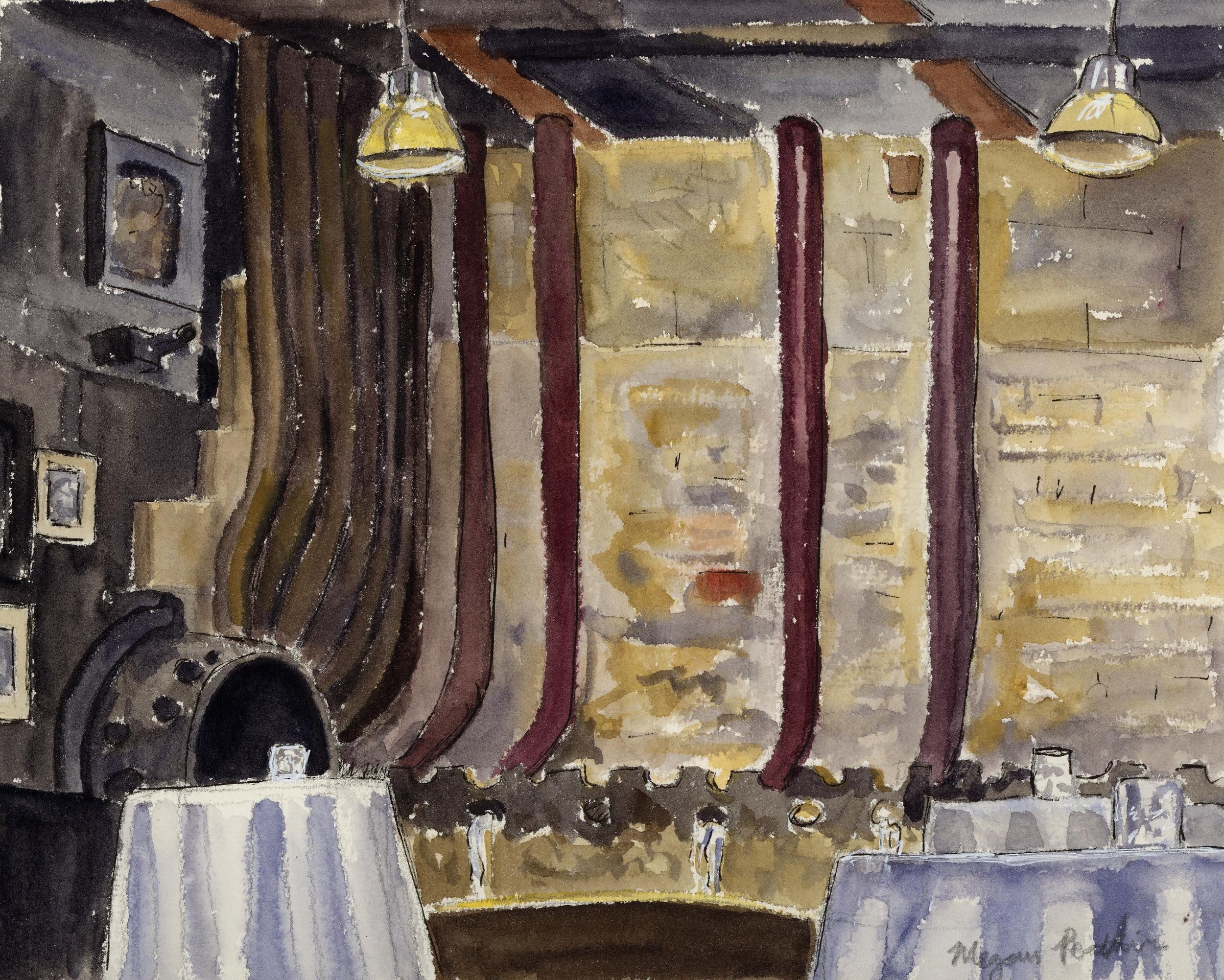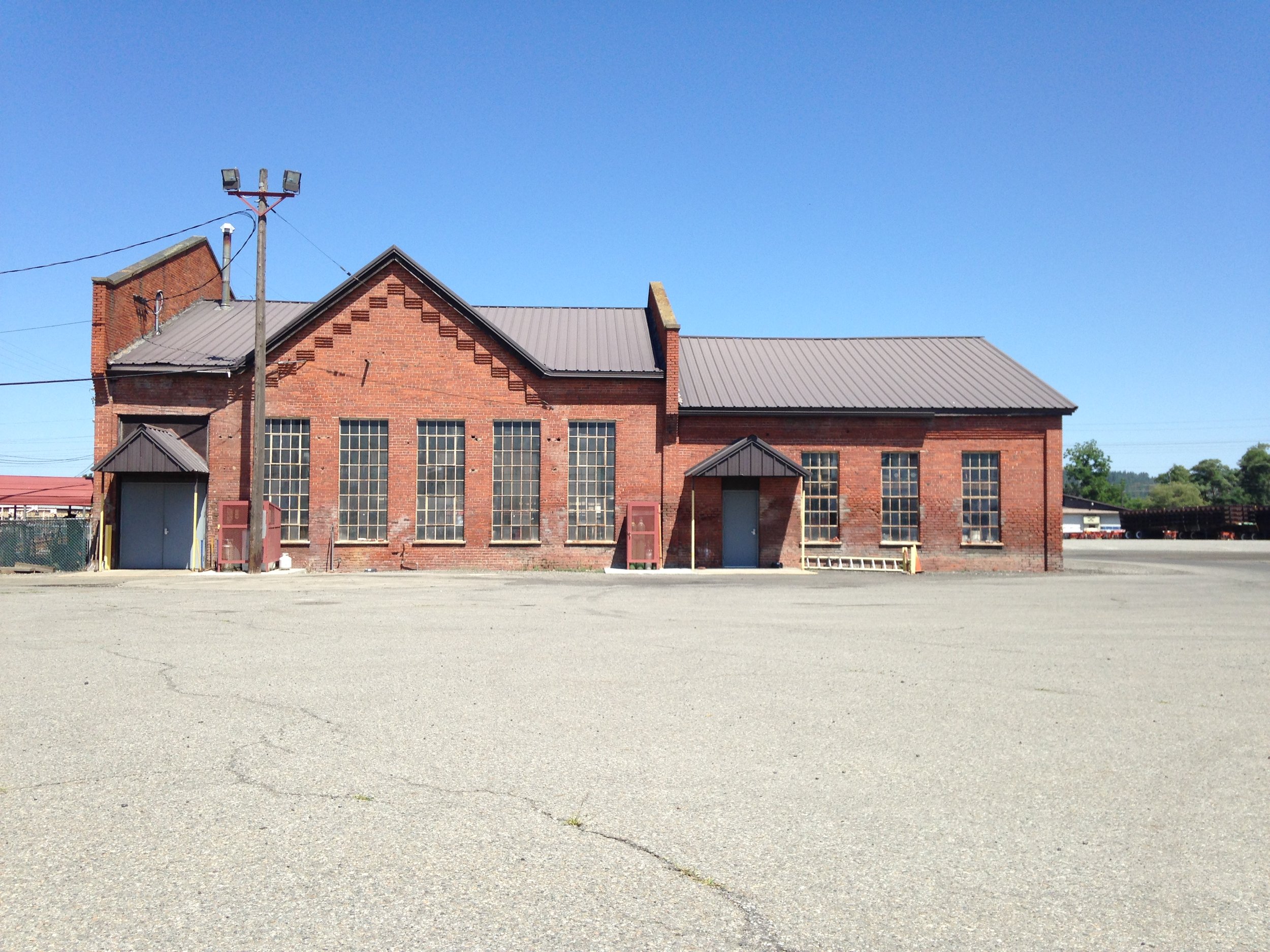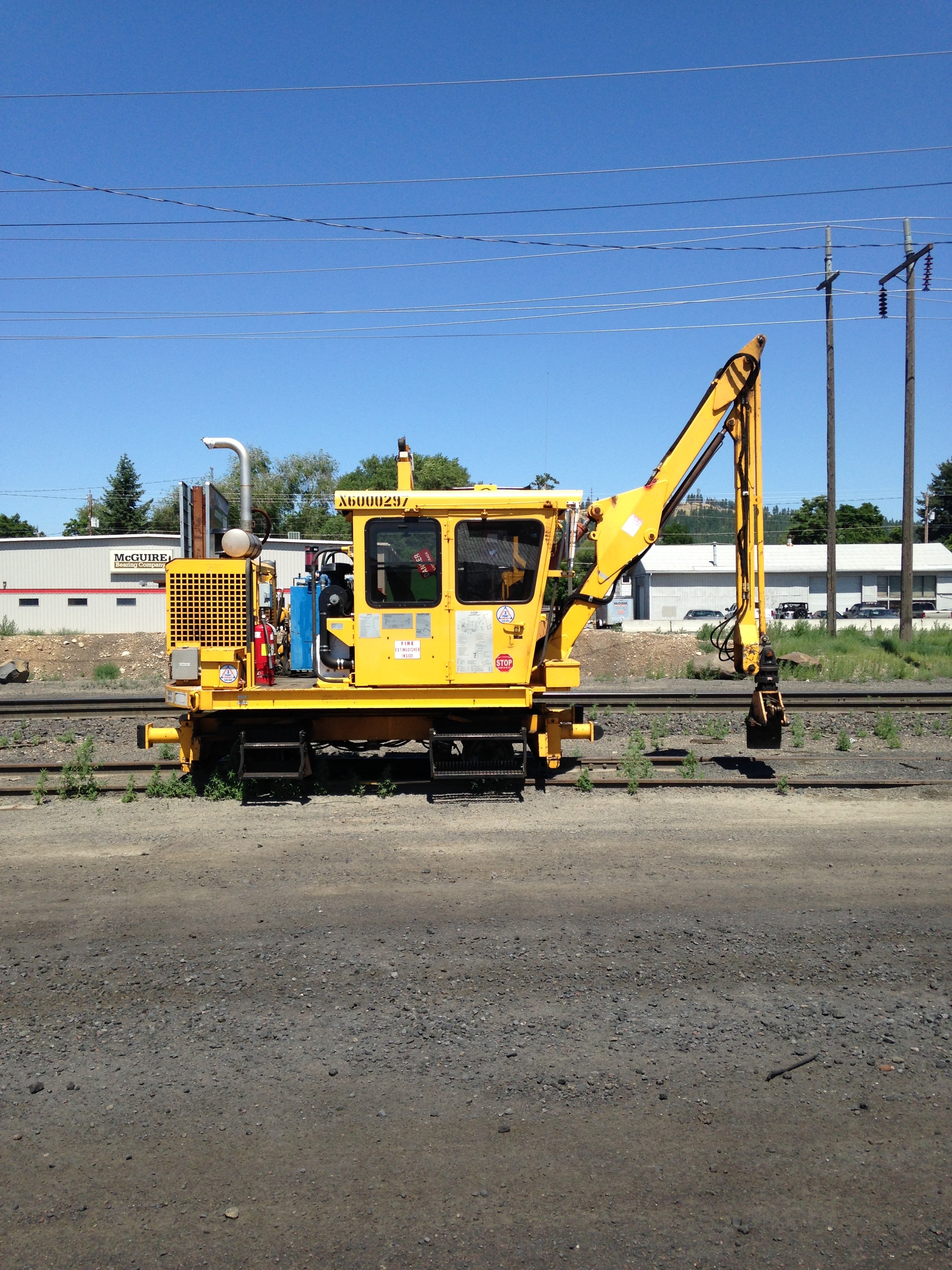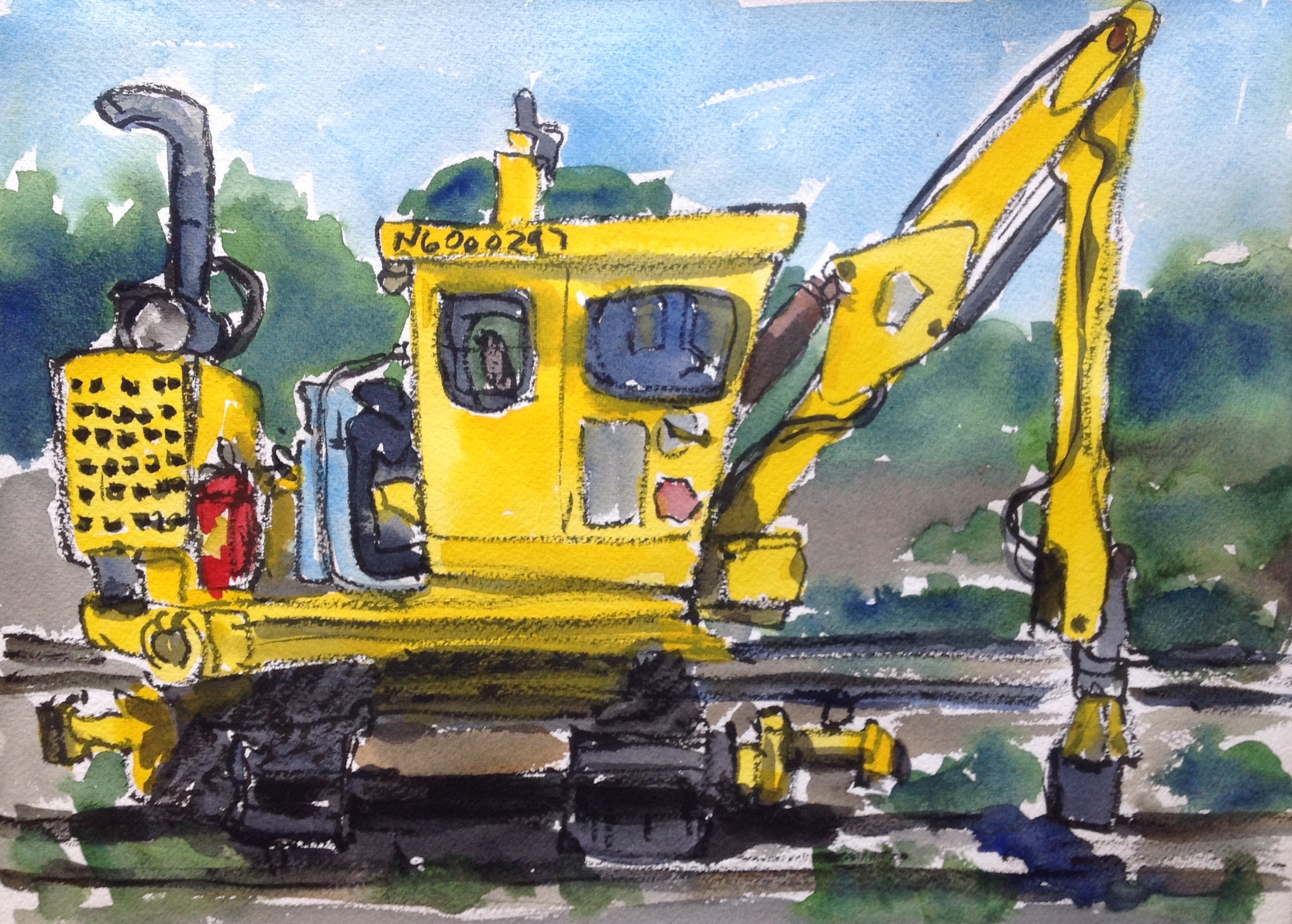The Steam Plant building in downtown Spokane is a restaurant and brewery and houses offices and store fronts as well, but the name is a remnant of an older time. The building was an actual functioning steam plant for 70 years according to their website. It didn't shut down until 1986. Renovated with a vision toward making the most of the industrial space, many elements of the Steam Plant's past remain which create a unique atmosphere. I know I'm sounding a bit like an ad for the Steam Plant here, but I have a soft spot for creative reuse, adapting to the surroundings and reusing old material in new and exciting ways, so I was thrilled by the aesthetics of the space. There's a lot of inspiration there!
This is a corner in one of the side rooms of the building. I loved the abstract composition created by the girders and pipes and the way the lighter elements emerged out of the darkness.
I worked my way across the page from left to right in order to not smear the paint (I'm right handed). Painting this was slow work, but worth it for the final result!
Walking by, this caught my eye. I think it is the front of an old boiler room, but don't quote me on that. Now it is a window into a private dining room, wallpapered in thin pipes.
The pipes that run down the wall here trickle water into a trough made by cutting a large horizontal pipe in half. You can see the fixture it ran through on the left size just above the table. Creative thinking with a great result!
This is a sketch done in a long vertical sketchbook two years ago. Done while sitting on a window ledge of the Davenport Hotel (carefully avoiding their decorative spikes!) just before going to the Broken Mic poetry reading at Neato Burrito. The stacks of the Steam Plant are an iconic part of the Spokane skyline and I hope they always will be!














